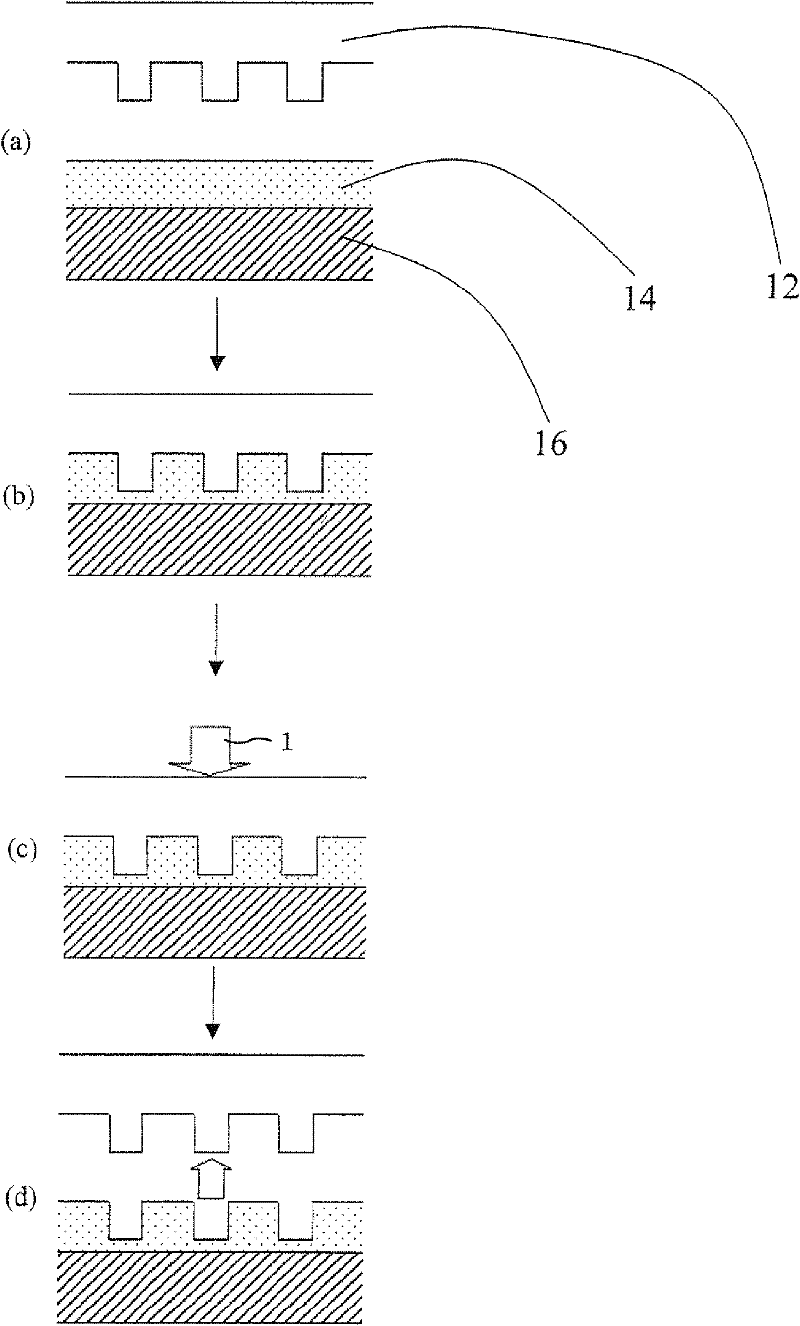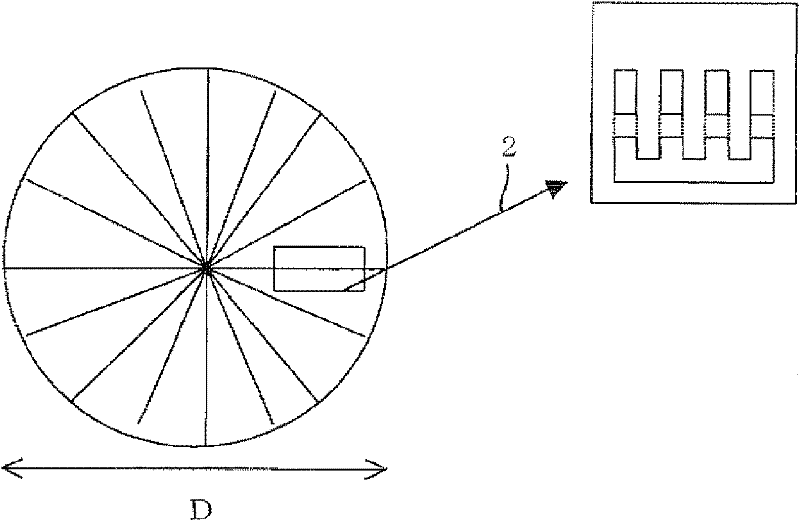Curable composition for transfer material and pattern formation method
A technology of curable composition and transfer material, which is applied in the photoengraving process of pattern surface, semiconductor/solid-state device manufacturing, nanotechnology for information processing, etc., and can solve the problems such as the use of resist materials that are not recorded
- Summary
- Abstract
- Description
- Claims
- Application Information
AI Technical Summary
Problems solved by technology
Method used
Image
Examples
Embodiment 1
[0131] Measure melamine 12.6g (0.1 mol), hydroxyethyl acrylate 78.1g (0.67 mol), paraformaldehyde 18.9g (0.6 mol), p-toluenesulfonic acid monohydrate 0.33g (1.74mL) in a 300mL 3-neck flask mol), p-methoxyphenol 20mg (1.61 mmol). The 3-necked flask was connected to a Liebig condenser equipped with an eggplant-shaped flask, and then the 3-necked flask was immersed in an oil bath set at 115° C., and dry air was passed through to make the mixture bubble, and it was stirred while making it reaction. As the reaction progressed, water began to accumulate in the eggplant-type flask attached to the Liebig condenser connected to the 3-necked flask. The reaction was carried out for 7 hours, and after confirming that the water in the reaction system could no longer be removed, the three-necked flask was lifted from the oil bath to complete the reaction.
[0132] Next, 950 parts by mass of propylene glycol monomethyl ether acetate, 2-benzyl-2-dimethylamino-1-(4-morpholinophenyl)-1- 1.5 ...
Embodiment 2
[0134] To 50 parts by mass of the reaction solution obtained in Example 1, 950 parts by mass of propylene glycol monomethyl ether acetate and 1.5 parts by mass of dicumyl peroxide (manufactured by Percumil D NOF Co., Ltd.) were added to make This was dissolved and then filtered through a 0.2 μm filter to obtain a curable composition. 0.5 ml of the curable composition was dropped on a glass substrate set in a spin coater, and then the glass substrate was rotated at 500 rpm for 5 seconds, then at 3000 rpm for 2 seconds, and then at 5000 rpm for 20 seconds to coat the glass substrate. A thin film is formed on the substrate. The glass substrate coated with the curable composition to form a thin film on the surface was heated in an inert oven at 160° C. for 1 hour and at 250° C. for 1 hour under nitrogen gas flow. Then, the ion etching rate of argon gas and oxygen gas of the obtained resin film was measured by the method mentioned later.
Embodiment 3
[0136]Measure melamine 12.6g (0.1 mole), 2-hydroxypropyl acrylate 78.1g (0.6 mole), paraformaldehyde 18.9g (0.6 mole), p-toluenesulfonic acid monohydrate 0.33g ( 1.74 mmol), p-methoxyphenol 20 mg (1.61 mmol). The 3-necked flask was connected to a Liebig condenser equipped with an eggplant-shaped flask, and then the 3-necked flask was immersed in an oil bath set at 115° C., and dry air was introduced to make the mixture bubble, and it was stirred while making it reaction. As the reaction progressed, water began to accumulate in the eggplant-type flask attached to the Liebig condenser connected to the 3-necked flask. The reaction was carried out for 7 hours, and after confirming that water in the reaction system could no longer be removed, the three-necked flask was lifted from the oil bath to complete the reaction.
[0137] Then, 950 parts by mass of propylene glycol monomethyl ether acetate, 2-benzyl-2-dimethylamino-1-(4-morpholinophenyl)-1-butane were added to 50 parts by m...
PUM
| Property | Measurement | Unit |
|---|---|---|
| thickness | aaaaa | aaaaa |
Abstract
Description
Claims
Application Information
 Login to View More
Login to View More - R&D
- Intellectual Property
- Life Sciences
- Materials
- Tech Scout
- Unparalleled Data Quality
- Higher Quality Content
- 60% Fewer Hallucinations
Browse by: Latest US Patents, China's latest patents, Technical Efficacy Thesaurus, Application Domain, Technology Topic, Popular Technical Reports.
© 2025 PatSnap. All rights reserved.Legal|Privacy policy|Modern Slavery Act Transparency Statement|Sitemap|About US| Contact US: help@patsnap.com



